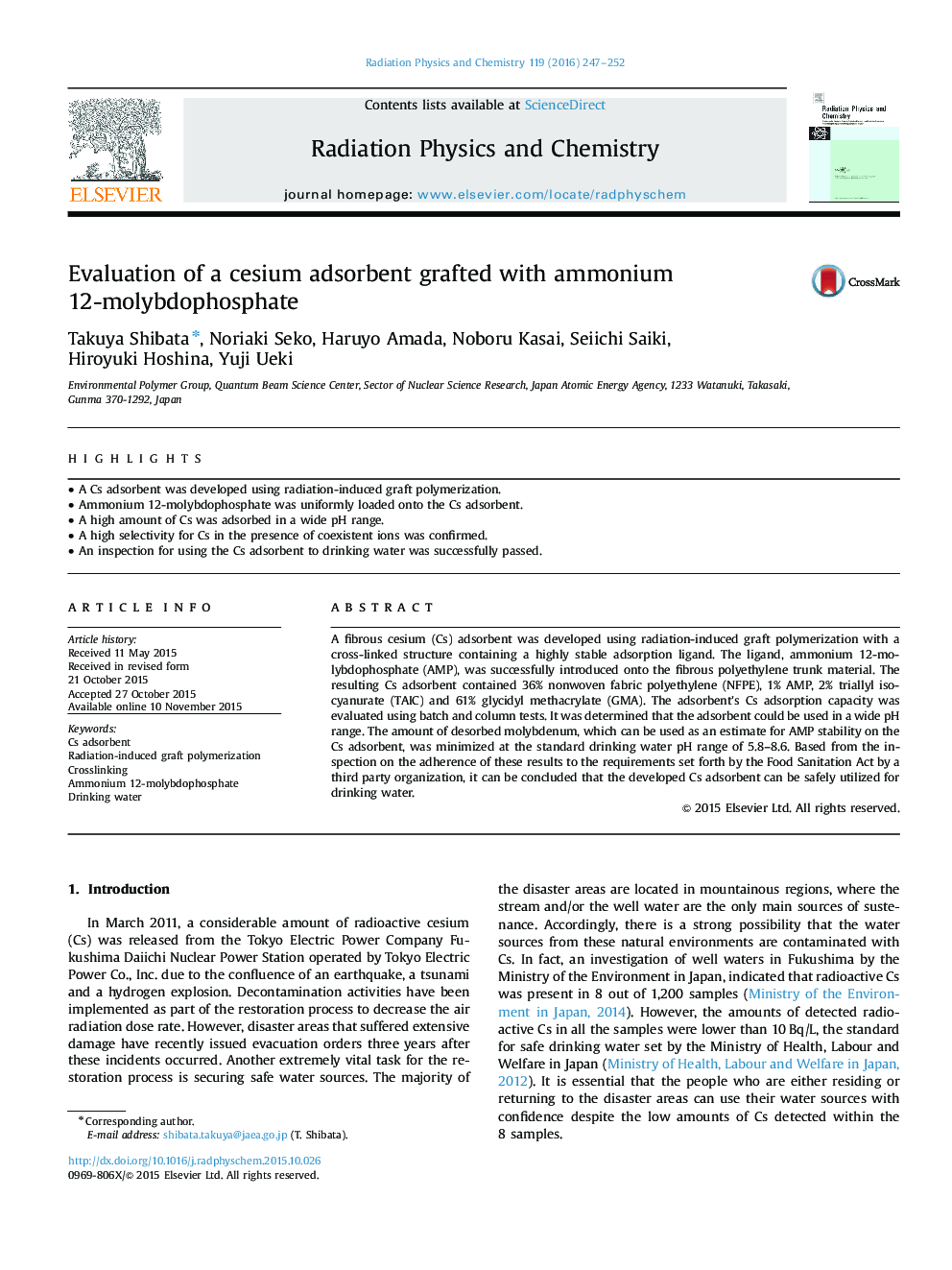| Article ID | Journal | Published Year | Pages | File Type |
|---|---|---|---|---|
| 1885780 | Radiation Physics and Chemistry | 2016 | 6 Pages |
•A Cs adsorbent was developed using radiation-induced graft polymerization.•Ammonium 12-molybdophosphate was uniformly loaded onto the Cs adsorbent.•A high amount of Cs was adsorbed in a wide pH range.•A high selectivity for Cs in the presence of coexistent ions was confirmed.•An inspection for using the Cs adsorbent to drinking water was successfully passed.
A fibrous cesium (Cs) adsorbent was developed using radiation-induced graft polymerization with a cross-linked structure containing a highly stable adsorption ligand. The ligand, ammonium 12-molybdophosphate (AMP), was successfully introduced onto the fibrous polyethylene trunk material. The resulting Cs adsorbent contained 36% nonwoven fabric polyethylene (NFPE), 1% AMP, 2% triallyl isocyanurate (TAIC) and 61% glycidyl methacrylate (GMA). The adsorbent's Cs adsorption capacity was evaluated using batch and column tests. It was determined that the adsorbent could be used in a wide pH range. The amount of desorbed molybdenum, which can be used as an estimate for AMP stability on the Cs adsorbent, was minimized at the standard drinking water pH range of 5.8–8.6. Based from the inspection on the adherence of these results to the requirements set forth by the Food Sanitation Act by a third party organization, it can be concluded that the developed Cs adsorbent can be safely utilized for drinking water.
